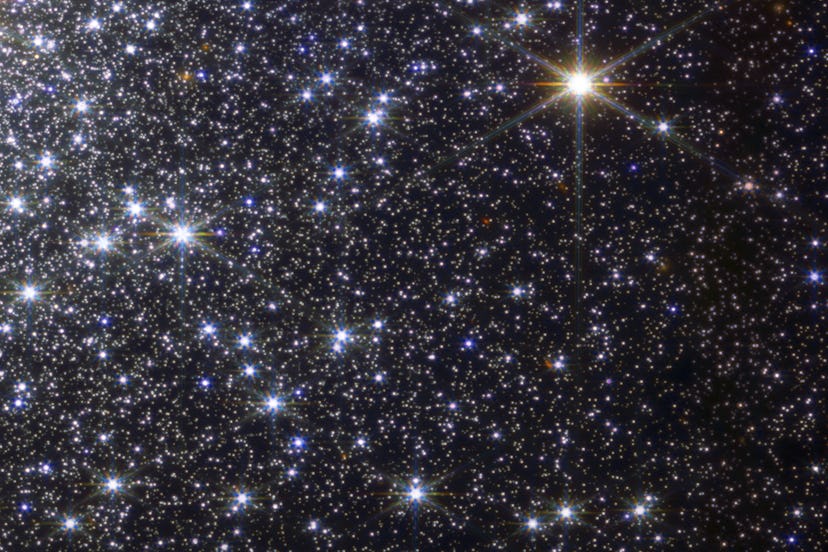This JWST Pic Of A Globular Cluster Is Almost Too Bright To Be Photographed
A new JWST shows a cluster of a thousand stars called M92, located 27,000 light-years away in our Milky Way.

Thanks to NASA’s James Webb Space Telescope (JWST) and its ability to take incredible space images, we can see more of the world beyond our planet. With each new photograph, stargazers and amateur enthusiasts alike get to see more of the world beyond our own pale blue dot — and one new image is so large and so bright that it stretched the limits of the JWST’s ability.
According to NASA, the newest image, dropped on Feb. 22, shows a globular cluster of a thousand stars called M92, located 27,000 light-years away in our Milky Way.
Can you explain what’s happening in this photo like I’m 5?
According to NASA, this section of outer space is called Messier 92 (M92), and it’s located in the constellation of Hercules. It’s considered a globular cluster, or, in simpler terms, “a ball of stars that orbits our galaxy’s core like a satellite.” M92 was first discovered in 1777, and it continues to be an area of space that astronomers are learning a whole lot about.
This new image of M92 was taken using the JWST Near-Infrared Camera (NIRCam), and the gap in the center of this image — perhaps its most astounding and stark feature — is left black intentionally.
That’s because the “dense center of the cluster” is “too bright to capture at the same time as the fainter, less dense outskirts of the cluster.” As you can see in the image, the stars get more bright and intense near the center of the image — and less bright near its edges.
And the photo is massive. According to NASA, it spans approximately 39 light-years across. That means if we could travel at the speed of light, which we can’t, it would take us 39 years to go from left to right in this photo of stars.
Scientists are excited about this area of space because there’s so much to learn from the millions of stars it contains.
“M92 is a classic target for studying how stars evolve. Not only is it so close that Webb can single out individual stars, but it contains some of the oldest stars in the Milky Way,” NASA says. “We can take what we learn from M92 to know more about distant stars in the ancient universe.”
To learn more about these new images and M92, visit NASA.
This article was originally published on